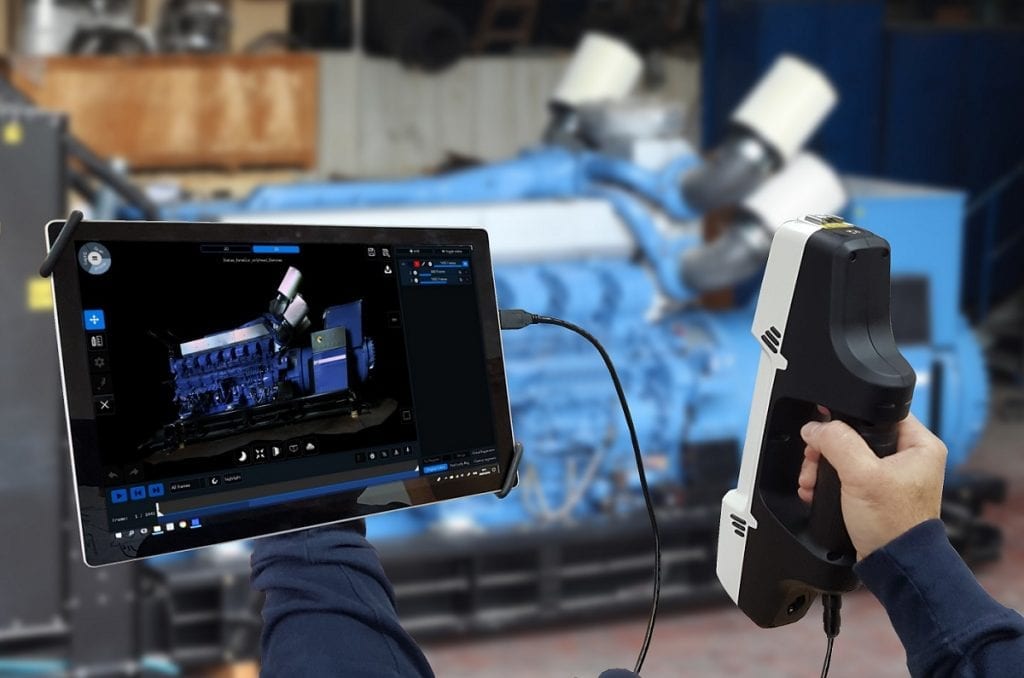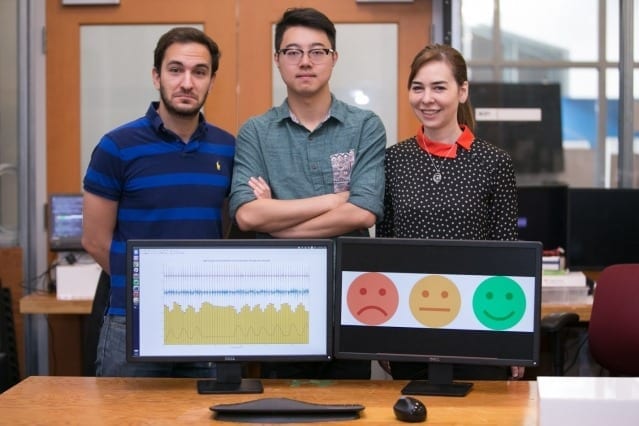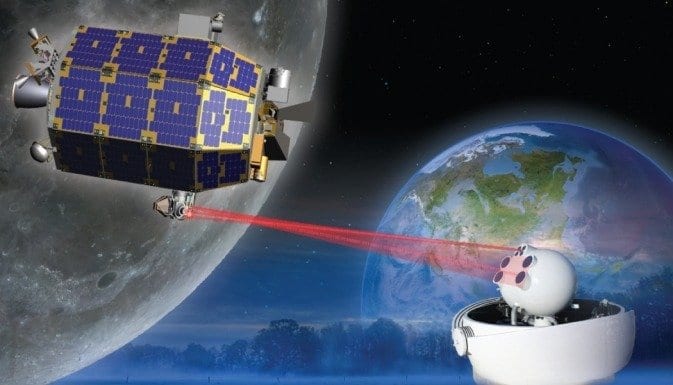
Remote control capabilities, including the ability to decipher users’ moods
Intel Israel’s R&D center in Haifa is in charge of developing a 3-D camera, which is to be launched next year. Igal Iancu, strategic planning director of the Intel Perceptual Computing Group, has confirmed to Calcalist that the device, which is designed to be incorporated into laptops and tablets and which has highly precise sensing and remote control capabilities, including the ability to decipher users’ moods, is under development by Intel.
According to Iancu, the Intel Perceptual Computing Group focuses on developing intuitive computer interfaces that integrate users’ natural capabilities, like gestures, voice, and facial expressions. The development is carried on by a group of 150 engineers, in collaboration with engineers in the United States. President of Intel Israel Mooly Eden is responsible for overseeing all of the group’s operations.
“Depth cameras are going to be used as an integral part of future man-machine interfaces,” says Iancu with reference to the new development, which has not yet been officially introduced to the public at large. “We have had quite a few achievements in this field. Thus, we have managed to incorporate into the device the capability of replacing an image background while shooting video. It is a depth camera that we are working on, which can detect objects in a far more precise manner than ever before.”
Earlier this week [Aug. 26], the IDG News Service reported that the chip giant is developing a “depth sensing” camera, which was, in effect, an enhanced version of a 3-D camera and which, according to the company, “can bridge the gap between the real and virtual world.”
The camera that will help kids read
Anil Nanduri, director of Perceptual Products & Solutions at Intel, told IDG that the camera would help computers better understand the intentions of their users, bring new levels of interactivity to games, and even identify users’ moods. “It will have the ability to sense excitement and emotions — whether the user is happy or smiling. The algorithms and technology are already there, but they are getting more technologically advanced and stable.”
In addition, the camera would be capable of identifying the distance, size, depth, color, contours and other characteristics of items in view. According to Nanduri, this development could have significant implications in the growing market of 3-D printing.
“You are not going to look for a case for a device anymore. You will just point that device at the camera, and the camera will recognize what you have. It will know the model number, and it will print the case for you, or you can go to the store and they will print it for you there.”
The camera would also be able to accurately track eye movements, a development which, according to Nanduri, has far-reaching educational implications. For instance, it would make it possible to pinpoint the difficulties children encounter when learning to read, by detecting the words they are stuck on and determining whether they need help with specific words.
Nanduri stressed that although the development may call to mind Microsoft’s Kinect camera, the camera under development by Intel offers far more advanced capabilities. “Kinect was a good initial version of a depth-sensing camera, especially from a long-range perspective. However, when Intel started looking at it, we were primarily interested in personal interaction at a closer range, of up to 1 meter or a meter and a half,” Nanduri said.
And while there are already cameras in the market with similar capabilities, such as the depth camera developed by Creative in collaboration with Intel, the technology giant is developing a much smaller camera that may be incorporated into computers, the way webcams are currently integrated. “This is a major development challenge — introducing so many technologies into such a small space. However, that’s where Intel has the edge,” Iancu told Calcalist.
The Latest Bing News on:
Detect emotions
- Nvidia-backed AI startup releases avatars that express human emotionon April 26, 2024 at 4:51 am
Synthesia, an AI startup supported by Nvidia, is enhancing AI avatars to accurately express human emotions and movements in corporate settings, catering to diverse industries globally with its latest ...
- Emotion Detection and Recognition (EDR) Market Exploring Perspectives How Focus Groups Illuminate Consumer Realitieson April 25, 2024 at 9:28 pm
Emotion Detection and Recognition (EDR) Market is valued approximately at USD 17.1 billion in 2019 and is anticipated to grow with a healthy growth rate of more than 18% over the forecast period ...
- Emotion can cause chickens to get red in the faceon April 23, 2024 at 1:35 pm
Studying emotion in animals is a complex research field, little explored up to now in birds, although reddening of the skin had already been observed in previous work on the blue-and-yellow macaw. An ...
- Woman Gave Scammer She Met on Dating Site Her $1.5 Million Life Savings Before Being Found Dead: Daughteron April 22, 2024 at 3:39 pm
My mom felt the emotions of feeling love and having companionship just through email. I know a lot of people out there saying, ‘How could that happen?’” Kelly Gowe told CBS News.
- Smile, You’re on an In-Car Camera!on April 21, 2024 at 5:00 pm
“We’re involved in early research to identify health parameters such as breath rate and heart rate, and many of these systems can detect various emotions.” This technology is still in the research ...
- AI outperforms humans in providing emotional supporton April 14, 2024 at 9:21 am
AI makes people feel heard better than humans, but effectiveness drops when its source is revealed. AI excels in emotional understanding.
- Artificial intelligence can help people feel heardon April 10, 2024 at 5:00 pm
and that AI was better at detecting emotions than these individuals. However, recipients reported feeling less heard when they learned a message came from AI. As AI becomes more ubiquitous in ...
- Can AI Show Cognitive Empathy via Acoustics?on April 5, 2024 at 5:00 pm
A new peer-reviewed study shows how AI can detect emotions on par with human performance from audio clips as short as 1.5 seconds. “The human voice serves as a powerful channel for expressing ...
- Death Stranding Reflects The Complex Emotions Of Parenthoodon April 1, 2024 at 7:35 am
Hideo Kojima’s action RPG, Death Stranding (2019), reflects the emotional challenges of parenting. It resists easy answers to these challenges.
- Is AI’s next big leap understanding emotion? $50M for Hume says yeson March 28, 2024 at 3:11 pm
Hume AI's EVI may have just set a new standard in mind-blowing human-like interactivity, intonation, and speaking qualities..
The Latest Google Headlines on:
Detect emotions
[google_news title=”” keyword=”detect emotions” num_posts=”10″ blurb_length=”0″ show_thumb=”left”]
The Latest Bing News on:
Intuitive computer interfaces
- What is Home Assistanton April 27, 2024 at 9:45 am
Are you tired of manually controlling every aspect of your smart home devices? Tired of having to hop from app to app to control your smart home? Do you dream of a seamless and automated home ...
- Windows 10 vs. Windows 11: Is It Worth to Upgrade in 2024?on April 27, 2024 at 7:00 am
Explore the key differences between Windows 10 vs. Windows 11, including the new features, and learn whether upgrading to Windows 11 is worth it.
- How Computer Vision Is Transforming Cybersecurityon April 27, 2024 at 1:40 am
Explore how computer vision revolutionizes cybersecurity, enhancing threat detection and surveillance systems through innovative technology.
- ShrutiSalunkhe Leads the Way in User-Centric VR and AR Design Innovationon April 26, 2024 at 8:20 pm
ShrutiSalunkhe Leads the Way in User-Centric VR and AR Design Innovation.Illinois, USA - April 27, 2024 — Amidst the current state of ...
- Create your own e-book using AI for just $25on April 26, 2024 at 9:00 am
Using ChatGPT, My AI eBook Creation Pro helps you write an entire e-book with just three clicks -- no writing or technical experience required.
- Anonymous Bitcoin Casino: Unveiling the World of Crypto Gamblingon April 24, 2024 at 5:58 am
Anonymous Bitcoin casinos are a breed of online gaming platforms that prioritize player privacy. These casinos do not adhere to traditional Know Your Customer (KYC) regulations. They allow players to ...
- 6 Best TurboTax Alternatives and Competitors for 2024on April 22, 2024 at 7:25 pm
Explore the best TurboTax alternatives to see which tax preparation software may be the right fit for you. Compare features, pricing, pros and cons.
- 7 innovative ways to use low-code tools and platformson April 22, 2024 at 2:00 am
Low-code platforms aren't just for web forms and simple integrations anymore. Here are seven innovative ways small and large enterprises are stretching the limits of what low-code can do.
- Appealing To Younger B2B Buyers: Why Composable Architecture Is Keyon April 19, 2024 at 4:01 am
Businesses are better equipped to meet the expectations of younger buying cohorts by offering flexible solutions that can be customized.
- Should Apple Kill Siri and Start Over?on April 18, 2024 at 7:19 am
Few features have promised to revolutionize the way we interact with our Apple devices as much as Siri, the company's ubiquitous ...
The Latest Google Headlines on:
Intuitive computer interfaces
[google_news title=”” keyword=”intuitive computer interfaces” num_posts=”10″ blurb_length=”0″ show_thumb=”left”]










